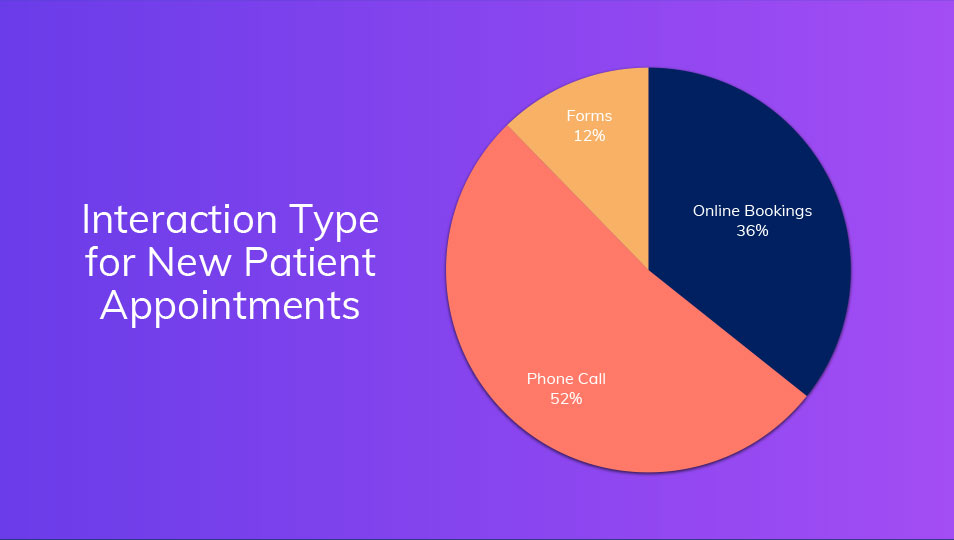How To Fix Common Lead Tracking Mistakes That Are Costing You Patients: Incomplete Data
Any company looking to effectively increase their customer volume must track analytics and attribution for their new leads. Healthcare practices are no different.
The new patient journey from lead source to scheduled appointment is filled with valuable insights that can significantly impact a practice’s growth. At a bare minimum, practices need to be able to report on lead volume, conversion rates, and marketing attribution. And yet, even these seemingly straightforward metrics can be hard to track accurately.
In this short series, we will discuss common lead tracking mistakes made by many healthcare practices — mistakes that can result in incorrect reporting, missed revenue opportunities, higher patient acquisition costs, and a poor patient experience.
Mistake #1: Missing Channel Data
Each patient lead channel has its own tracking challenges and technology requirements. This means that adding additional channels often brings compounding complexity. As a result, many practices are not comprehensively tracking 100% of their leads with marketing attribution. Unfortunately, this incomplete data can have costly effects to the healthcare practice.

Here are some of the major drawbacks to working with incomplete lead data:
1. Inefficient Resource Allocation And Wasted Spending
Without tracking lead volume from each marketing channel, it is nearly impossible to determine how well your marketing efforts are generating leads. If you don’t have an accurate picture of your lead volume and conversion rates per marketing channel, you will not be able to efficiently allocate your resources for the highest ROI.
2. Missed Opportunities
Lack of tracking can lead to missed opportunities. For example, if a particular marketing channel is consistently bringing in high-quality leads, the practice might not recognize it and fail to capitalize on its success. Consider that different marketing activities may drive different interaction types. For instance, if campaign A tends to drive online bookings, and campaign B is driving phone calls, what will your reporting look like if you aren’t tracking attribution for both interaction types?
3. Innaccurate Conversion Rate Metrics
If you aren’t tracking and (de-duping) 100% of your leads, you won’t be able to measure accurate lead volume. Without a lead count, you can’t know your lead-to-appointment conversion rate, nor your conversion rates per marketing campaign. This type of reporting data is crucial for identifying operational issues, staff training gaps, and other areas for improvement.
4. Difficulty Scaling
Scaling any business requires a systematic approach with consistent standards of measurement and reporting. Collecting complete and accurate data means you can track outcomes and tie them to changes you’re making. The marketing landscape is more data-driven than ever, and you may be prone to falling behind the competition if you have holes in your lead data.
Solving For Comprehensive Lead Tracking
So, you want to capture all your new patient leads with accurate marketing attribution. You don’t have to build this all on your own. But if you want to put this together yourself, here is a high-level overview of the steps you’ll need to take:
1. Implement Call Tracking
You will need to implement a call tracking vendor. There are a number of companies to choose from, but this is not something you can build on your own. Put simply, call tracking will allow you to track the lead source for each new patient phone call. More advanced call tracking systems can also record and analyze the phone conversations for additional insights.
2. Develop Web Session Tracking
To capture lead data from web forms, website chat widgets, or online booking systems, you will need to develop session tracking for your website. Google Tag Manager can be helpful for configuring tracking cookies and passing attribution data into hidden fields on your web forms. If this is new to you, you may want to hire a web developer who can help.
3. Aggregate Your Lead Interactions
Configure a unified data analysis tool to aggregate all new patient interactions. Tools such as PowerBI, MS Excel, Tableau, or CorralData may work for you.
4. Reference Booking Statuses
Now pipe in data from your EHR/PMS to your data analysis tool to determine the booking status of each lead. You will likely use phone numbers as your common field to match data. You can now report on total lead volume and conversion rates, or view this data for individual marketing activities.
What's Next?
In our next post in this series, we cover duplicate lead interactions: the reporting problems they cause, and how to reconcile them.
And of course, if this all sounds like too much hassle, you could always explore Liine’s all-in-one marketing analytics.